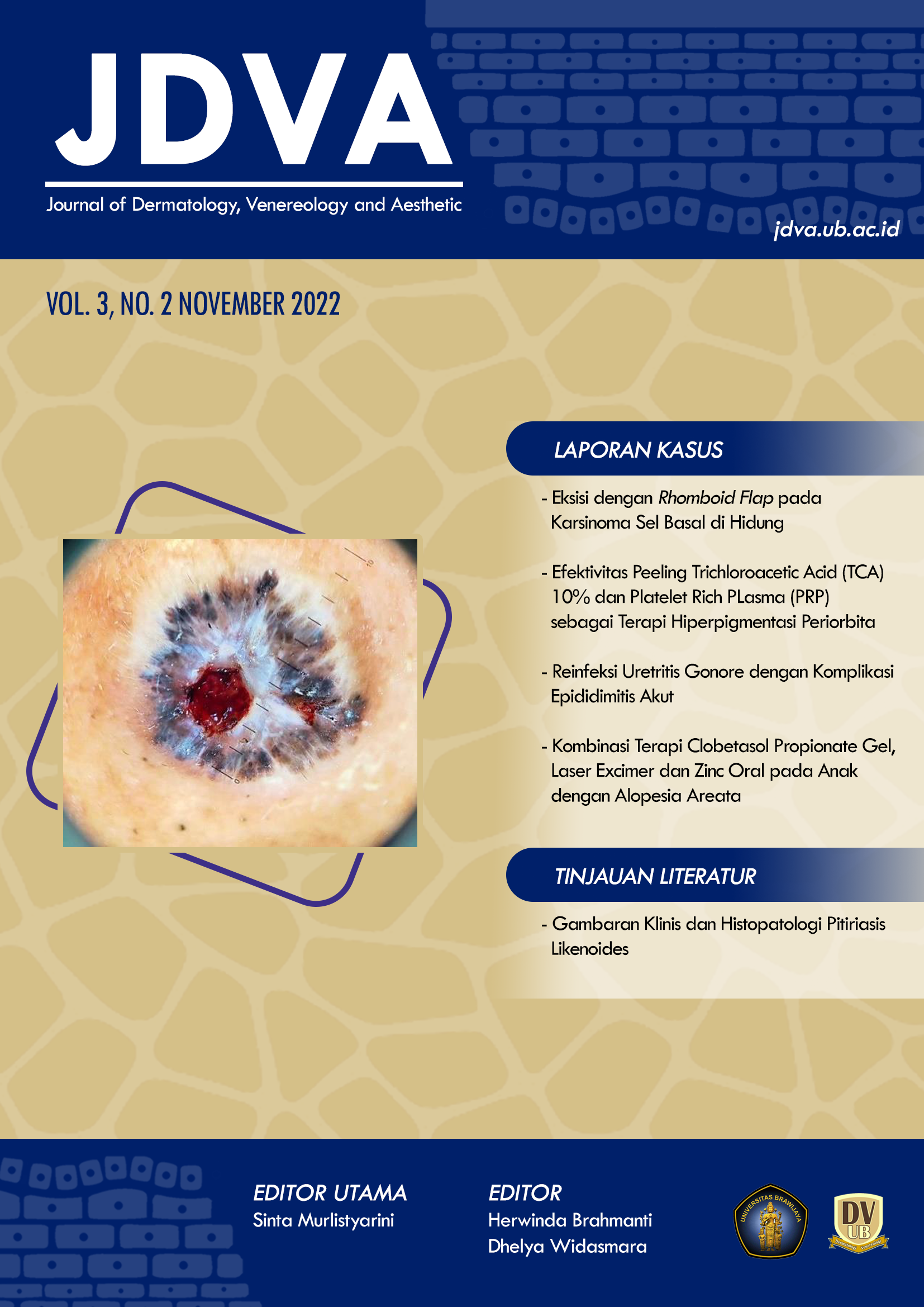DRUG-INDUCED LIVER INJURY ASSOCIATED WITH SKIN HYPERSENSITIVITY REACTIONS
Abstract
Keywords
Full Text:
PDFReferences
Wu Y, Xiao G, Zong P, Jiang G, Liao
Y, Liu Z, Zhou Y. Diagnosis of
Hypersensitivity Induced by
Antituberculosis Drugs. Journal of
Healthcare Engineering. 2021 Dec
;2021.
Shin HJ, Chang JS, Kim MS, Koh
BG, Park HY, Kim TO, Park CK, Oh
IJ, Kim YI, Lim SC, Kim YC.
Hypersensitivity reactions to multiple
anti-tuberculosis drugs. Plos one.
Feb 4;16(2):e0246291.
Menteri Kesehatan Republik
Indonesia. Pedoman Nasional
Pelayanan Kedokteran Tata
Laksana Tuberkulosis [Internet].
Jakarta; 2020. p 1–156. Available
from: http://journal.umsurabaya.ac.id/index.php/JKM/articl
e/view/2203
World Health Organization. WHO
consolidated guidelines on
tuberculosis. Module 4: treatmentdrug-susceptible tuberculosis
treatment. World Health
Organization; 2022 Apr 30. p 98.
Pichler WJ. Immune
pathomechanism and classification
of drug hypersensitivity. Allergy.
Aug;74(8):1457-71.
Shiohara T, Mizukawa Y. Druginduced hypersensitivity syndrome
(DiHS)/drug reaction with
eosinophilia and systemic symptoms
(DRESS): An update in 2019.
Allergology International.
;68(3):301-8. Available from:
https://doi.org/10.1016/j.alit.2019.03.
Moreno-Torres M, Quintás G, Castell
JV. The potential role of
metabolomics in drug-induced liver
injury (DILI) assessment.
Metabolites. 2022 Jun 19;12(6):564.
Chughlay MF, Blockman M, Cohen
K. A clinical approach to druginduced liver injury. Current allergy &
clinical immunology. 2015 Dec
;28(4):252-6.
Devarbhavi H, Raj S. Drug‐induced
liver injury with skin reactions: Drugs
and host risk factors, clinical
phenotypes and prognosis. Liver
International. 2019 May;39(5):802-
Yokoi T, Oda S. Models of
idiosyncratic drug-induced liver
injury. Annual Review of
Pharmacology and Toxicology. 2021
Jan 6;61:247-68.
Heelan K, Sibbald C, Shera NH.
Cutaneous Reactions to Drugs. In:
Kang S, Amagai M, Bruckner AL,
Enk AH, Margolis DJ, McMichael AJ,
et al., editors. Fitzpatrick’s
Dermatology. 9th ed. New York:
McGraw-Hill Education; 2019. p.
–36.
Novita I, Mahmuda N, Adrian M,
Putra S, Universitas FK, Surakarta
M, et al. Reaksi Alergi Obat Pada
Pasien Tuberculosis Paru Dengan
Gambaran Radiologi Menyerupai
Pancoast Tumor ; Tantangan
Diagnosis Dan Terapi. 2020: 199–
Refbacks
- There are currently no refbacks.

This work is licensed under a Creative Commons Attribution-ShareAlike 4.0 International License.

